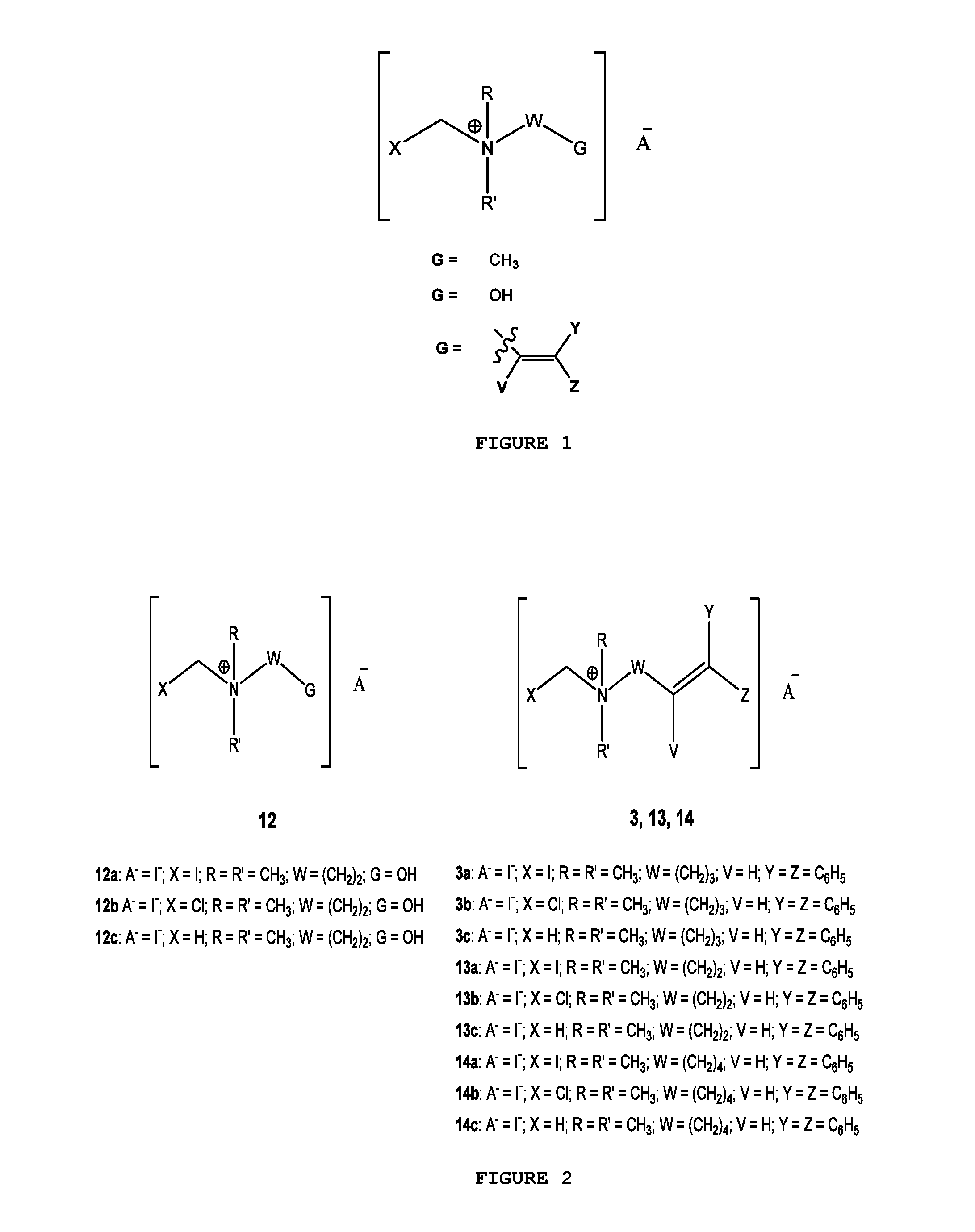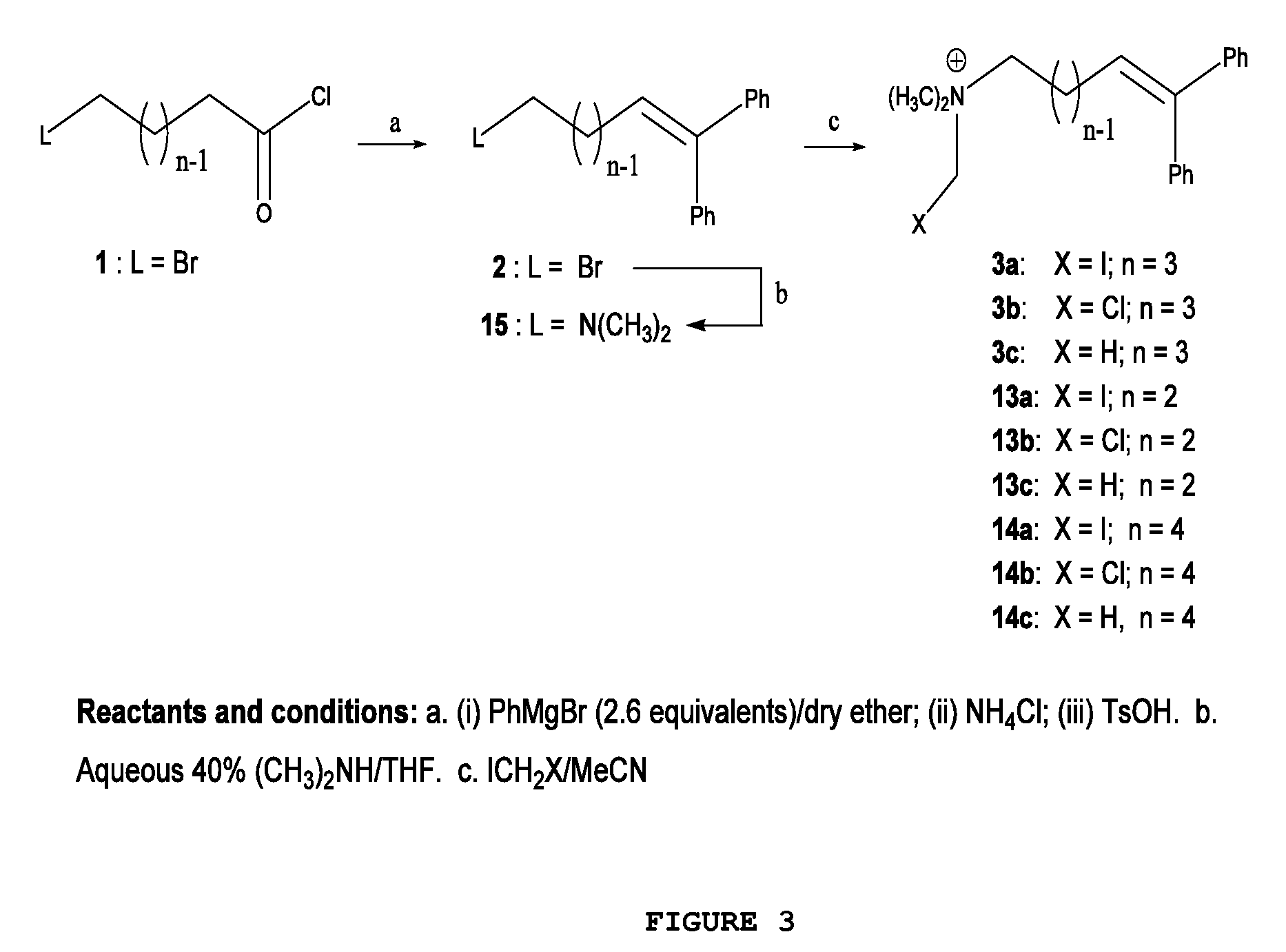Quaternary N-(halomethyl) ammonium salts as therapeutic agents
a technology of quaternary n-(halomethyl) ammonium salt and ammonium salt, which is applied in the field of biochemistry and to quaternary ammonium salts, can solve the problems of low production cost, unsatisfactory side effects, and little understanding of the mechanism by which apparent selectivity of hosts is determined, and achieves low production cost
- Summary
- Abstract
- Description
- Claims
- Application Information
AI Technical Summary
Benefits of technology
Problems solved by technology
Method used
Image
Examples
Embodiment Construction
[0030]FIG. 1 illustrates the general chemical structure of the series of quaternary N-(halomethyl) ammonium salts according to the invention. Anion A− is a halide (chloride, bromide, iodide), acetate, p-toluenesulfonate or any other pharmaceutically acceptable anion. R and R′ are alkyl groups such as methyl, ethyl, propyl or butyl (they are either the same group or different from each other). W is a chemical tether, characterized by a carbon chain (CH2)n constituted by a number n of methylene units such that n=1, 3, 4, 5, 6, 7, 8, 9, 10, 11, 12, 13, 14; the structure of the chemical tether W either a normal or a branched hydrocarbon chain.
[0031]W is also a chemical tether constituted by an oxycarbonated chain with structure represented by —(CH2)s[(CH2)2—O—]t(CH2)u—, made of a number s of methylene units such that s=0, 1, 2, 3, 4, 5, 6, 7, 8, 9, 10, and a number t of ethyleneoxy units such that t=0, 1, 2, 3, 4, 5, 6, 7, 8, 9, 10, and a number of u methylene units such that u=0, 1, 2,...
PUM
| Property | Measurement | Unit |
|---|---|---|
| catalytic efficiency | aaaaa | aaaaa |
| structure | aaaaa | aaaaa |
| weight loss | aaaaa | aaaaa |
Abstract
Description
Claims
Application Information
 Login to View More
Login to View More - R&D
- Intellectual Property
- Life Sciences
- Materials
- Tech Scout
- Unparalleled Data Quality
- Higher Quality Content
- 60% Fewer Hallucinations
Browse by: Latest US Patents, China's latest patents, Technical Efficacy Thesaurus, Application Domain, Technology Topic, Popular Technical Reports.
© 2025 PatSnap. All rights reserved.Legal|Privacy policy|Modern Slavery Act Transparency Statement|Sitemap|About US| Contact US: help@patsnap.com



